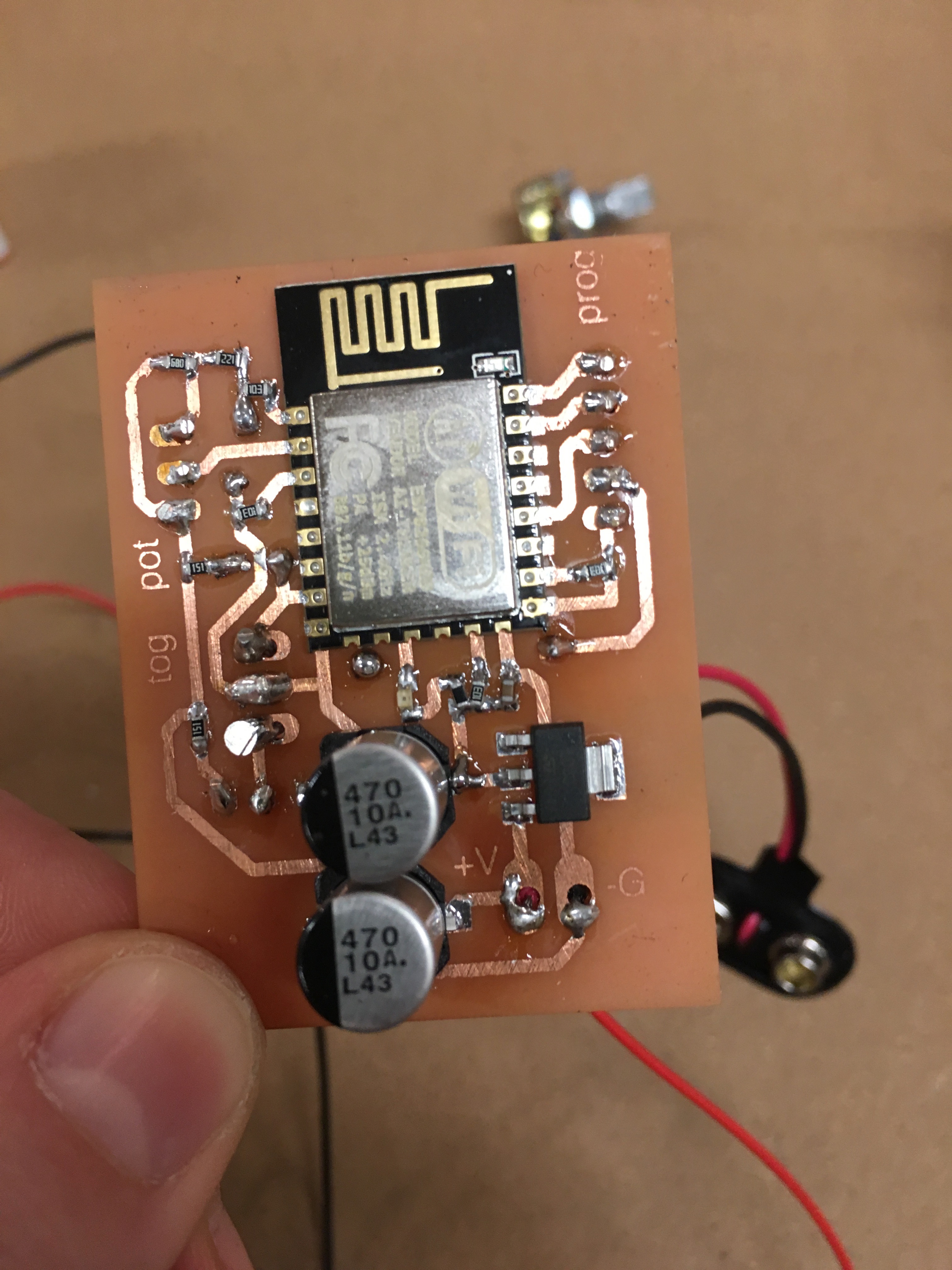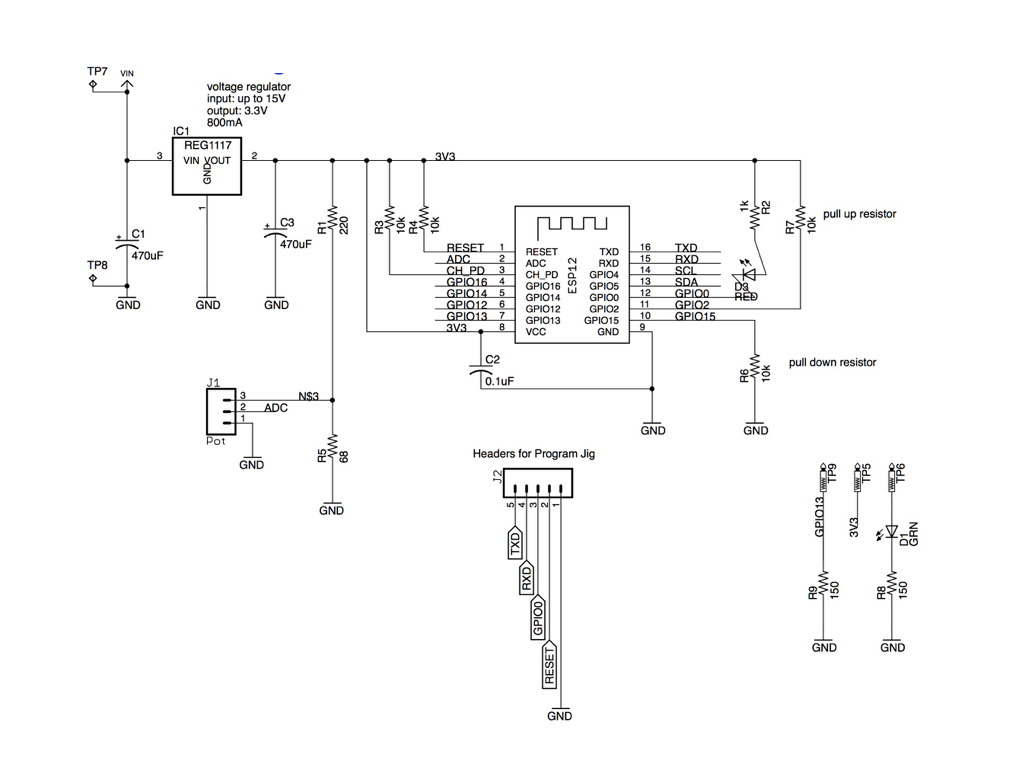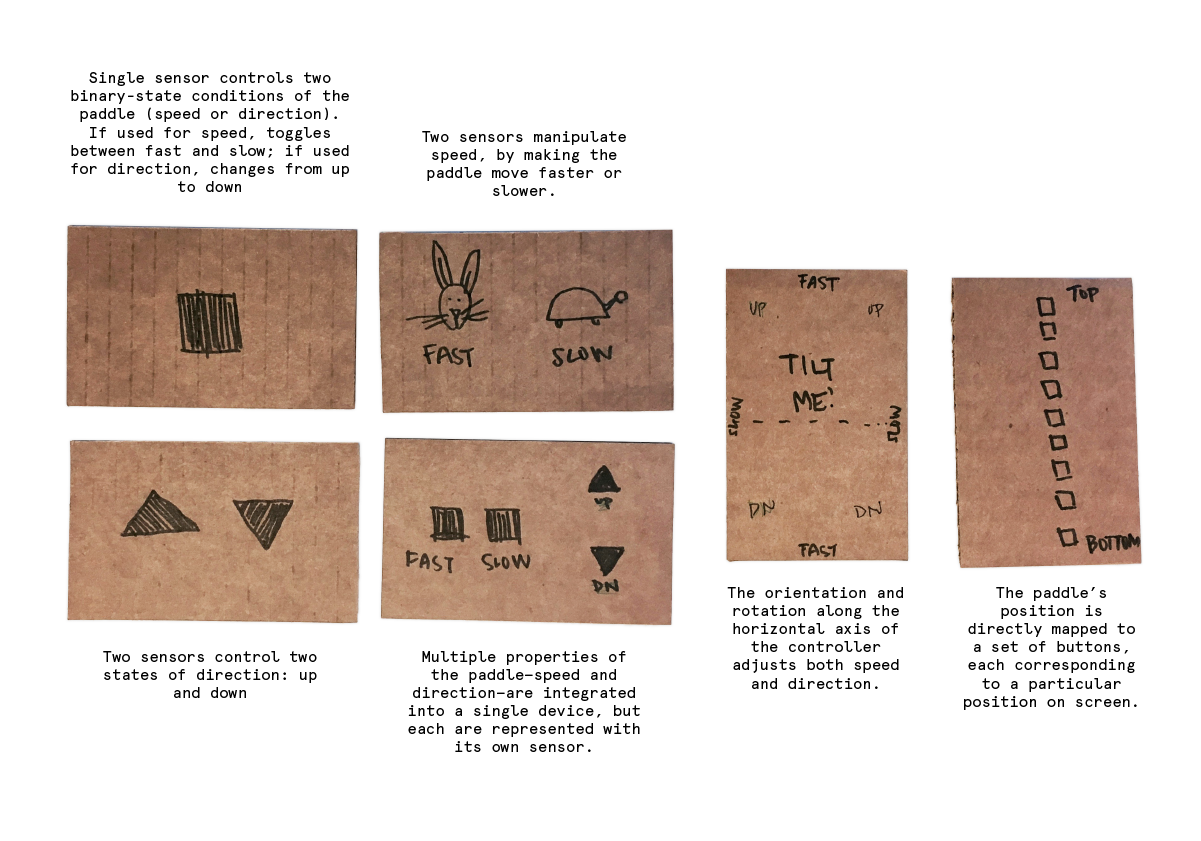Controllers for Pong
New forms of interacting with a familiar game
In the iconic arcade game of Pong players used a rotary knob to hit a virtual ball back and forth. This project proposes new controllers for the familar game. How do interactions define the games played? In providing players with choices in how they control their paddle, the game rejects that a singular form of interaction is required to constitute a game.
Role: prototyping, user testing, programming, client and server development, fabrication, game studies research
Tools: Arduino, Eagle, Processing, Othermill, lasercutter
Shown at New York Maker Faire 2017


Wireless Controllers
Each controller ran off an ESP8216 and connected to the game wirelessly. As the controllers were unfamiliar, the wireless capability allowed players to quickly and easily switch between different ones.


Modular Boards
The circuit was designed to be consistent across all boards, with the exception of what sensor was used to play the game. Each board had a switch and pair of indicator lights to connect to the game.

User Testing
Cardboard prototypes were used to explore people's understanding of the unfamiliar controls. Some prototypes allowed the player to modify only the paddle's speed or it's direction. While initially unexpected, players would change their game-play strategy once they understood how the controller manipulated their respective paddle.